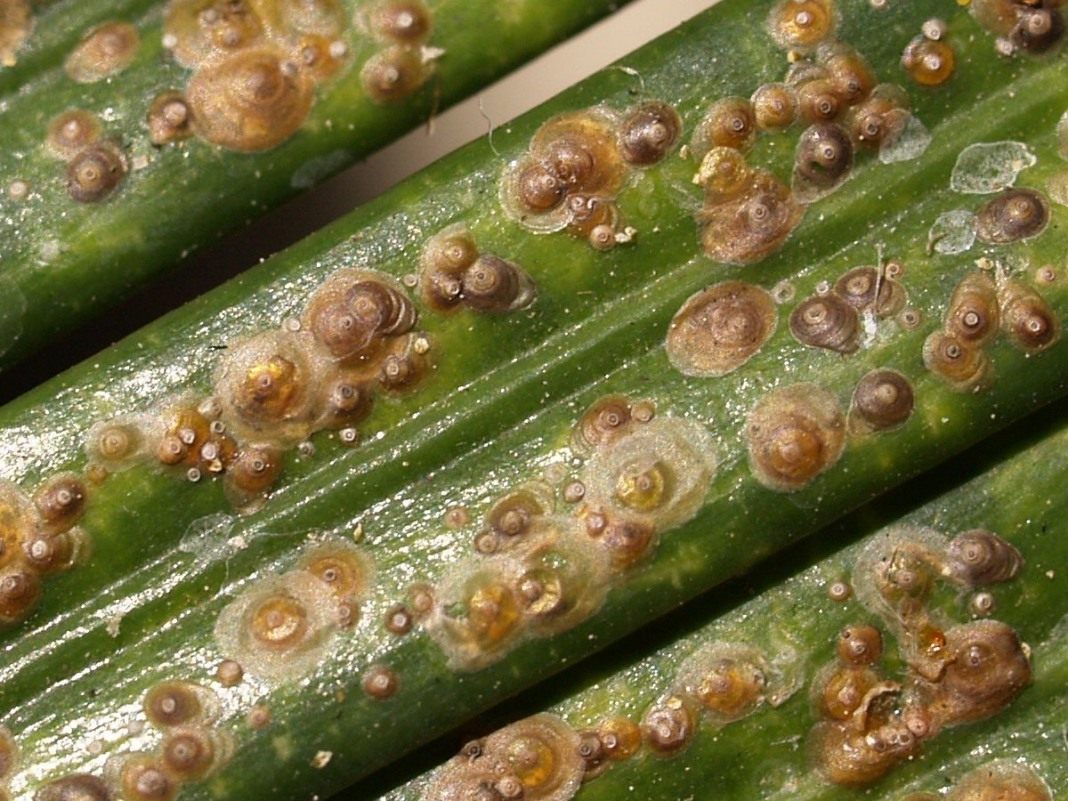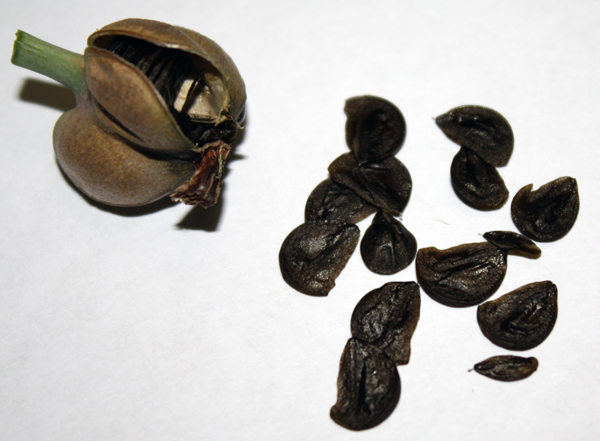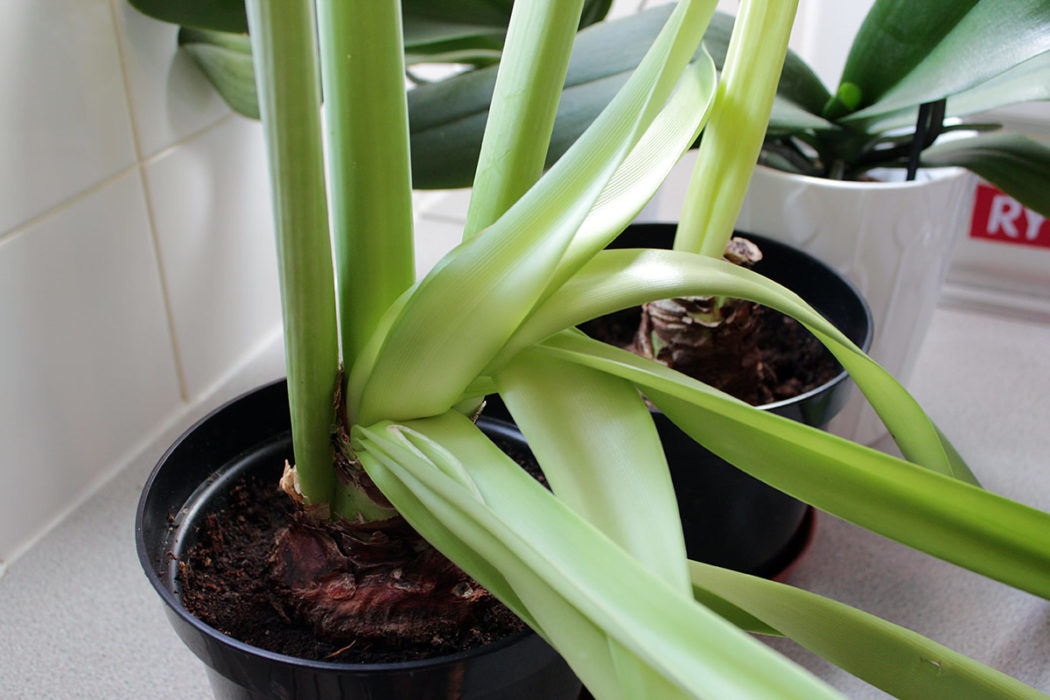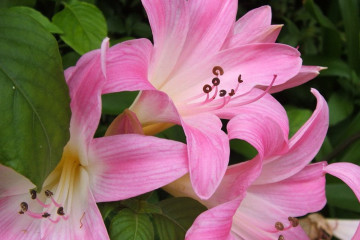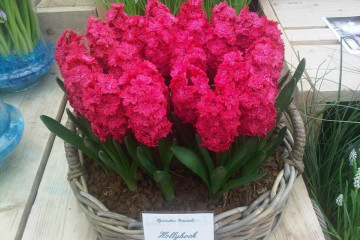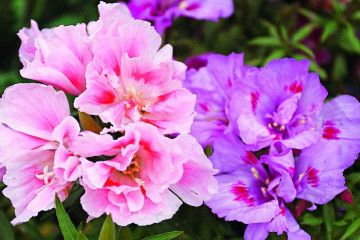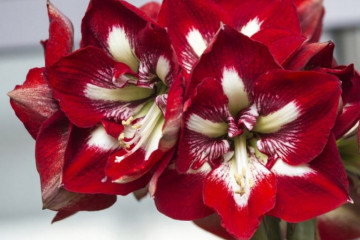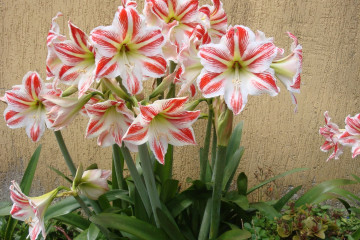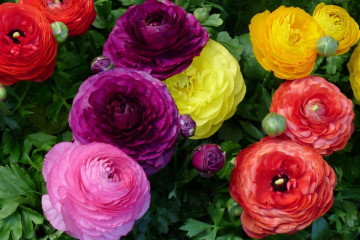Amaryllis flowers - home care
Content:
Amaryllis (amaryllis) is a plant native to South Africa. The flower is used to hot summers and cold winters. This is one of the hibernating plants. To provide proper care for the indoor flora representative, you need to learn about the features of care and the problems associated with its maintenance.
Amaryllis appearance
Amaryllis is a flowering plant popular with flower growers. It is sometimes confused with hippeastrum.
Amaryllis has external features that will distinguish it from other similar plants:
- The elongated bulb has a diameter of 4 to 15 centimeters, produces 1-2 peduncles or arrows;
- Narrow leaves reach half a meter in length, are characterized by a dark green color;
- On the peduncle, from 2 to 12 flowers, resembling a funnel, grow. Petals can be of different shades, there are white, red, pink, purple. They have streaks of bright red color. There are 6 petals in total, sharpened at the tips.
Keeping amaryllis at home
The flower is known by another name - belladonna, which translates as "beautiful lady". Differs in a contradictory character. On the one hand, in order to get blooming amaryllis, the home care needed by the plant is not too laborious. It is necessary to create comfortable conditions, providing peace in the cold season. With good care of amaryllis and proper planting, cultivation will be a pleasure, delighting not only with beautiful, large flowers, but also with a pleasant aroma.
Soil selection
For a comfortable existence, prepare the soil suitable for plants with bulbs. The mixture is purchased ready-made in specialized stores or mixed independently. To do this, take sand, peat, leafy soil, turf in equal quantities. After mixing, the soil is laid on the prepared drainage.
Pot selection
The pot for amaryllis must be chosen high. During growth, the bulb acquires a root system, which needs space. It is better not to use a pot that is too wide to avoid stagnant water, which will negatively affect the plant.
Top dressing and fertilization
The plant is fed during the period of flowering, growth. The procedure should be carried out every 10-14 days. For this, organic and mineral fertilizers are used. In the first case, apply:
- Mullein. It is manure that fertilizes many plants. To create, 300 grams of raw materials are used, which are diluted in 10 liters of water;
- Bird droppings. You need 80 grams of concentrate and a bucket of water.
Fertilizers are applied to the soil. At the same time, it is recommended to alternate organic and mineral mixtures.
Temperature regime
Amaryllis at home feels comfortable at moderate temperatures. In winter, they are kept indoors at 10-12 degrees. In summer and spring, the plant is usually warm. Provide temperatures from 20 to 24 degrees. Amaryllis loves fresh air, but does not tolerate drafts. At nights in warm seasons, a slight decrease in temperature by several degrees is permissible.
Watering
In the summer, regular watering is required, it is necessary to moisten the soil immediately after drying. After planting, water is poured into a tray on which the pot stands.Then, when the amaryllis takes root, the soil is moistened.
In winter, the plant is dormant, watered much less often. Humidification depends on the room temperature. When the plant is warm, watering is necessary 2-3 days after the soil dries. If amaryllis lives at temperatures below 15 degrees, they rarely moisturize.
Diseases and pests of amaryllis
Some insects can harm the plant. What kind of pest destroys the flower is determined by the appearance of the stems and leaves.
More often amaryllis affects:
- False shield. Brown spots form on the leaves; a soap solution will help to cope with the parasite;
- Mealybug. The insect settles not only on the leaves, but also on the stem. Fluffy, bulky spots are formed. It is easy to get rid of the pest; you need to wipe the affected area with a damp cloth. After a while, repeat the procedure;
- Onion tick. The parasite lives on the roots, affecting them. The flower itself withers, the leaves begin to turn yellow. This usually happens when decay, excessive watering;
- Aphid. It is not difficult to spot an insect on the leaves. They themselves turn yellow and curl up into a tube. Florists treat the plant with potash soap, wiping the leaves and stems with a solution.
In addition, the flower can suffer from fungal diseases, usually due to excessive watering. For example, the flower often infects stagonosparosis. Red spots appear on the leaves and stem, this is a dangerous disease that leads to the death of the plant. Brown or gray streaks may occur, characterizing anthracnose and gray rot.
How to care for amaryllis during illness:
- The affected sheets must be destroyed;
- Transplant the plant into new soil, since fungi often infect the root system.
All diseases cause:
- excessive moisture;
- room temperature drop;
- drafts;
- dense soil.
Bulb planting rules
The easiest way to grow amaryllis is from a bulb. Before planting it, they examine it. It should be dense, rough and clean. Spots indicate infection with parasites or fungi. There may be dark scales on the bulb, these are dead parts of the plant, they are removed. Before planting, they are treated to prevent the development of the disease.
Drainage is placed on the bottom of the selected pot:
- expanded clay;
- pebbles;
- Red brick.
The material should be small, 3 centimeters high. After that, the earth is poured, the bulb is immersed in two-thirds. The top of the planting material remains in the air. They put the earth moist so that the bulb begins to grow. After the appearance of the peduncle, the planting is successfully completed, the care of the amaryllis flower begins.
Seed propagation
The plant can reproduce not only by bulbs, but also by seeds. The choice of method depends on the experience of the grower.
Seed propagation is a more laborious process. The sequence of actions is determined by the state of the raw materials. With fresh seeds it is easier, they are planted in the ground, sprinkled with earth. Then watered using a spray bottle. After a maximum of three months, they are transplanted, they continue to grow in large pots. The main thing is to provide room for the long root of the amaryllis.
If the seeds are old, they need to be soaked to make them swell. To do this, take a napkin, moisten it with water at room temperature. The seeds are wrapped inside. Dishes with a napkin should be kept warm.After 2-3 days, the seeds will swell slightly, increasing in size, they are ready for planting.
Old planting material differs by a shell: it dries up and the size of the seeds decreases. Preliminary soaking is necessary for them.
"Awakening" after wintering
In winter, the plant is dormant. Before that, the flowering period ends, amaryllis sheds its leaves. It is necessary to stop bait in late summer - early autumn.
Amaryllis has faded what to do next:
- If the leaves remain, you do not need to cut them off. When they die off, they provide the bulb with essential nutrients for life. Already in hibernation, you can get rid of dried leaves, otherwise, at the beginning of watering, they can rot, which will lead to flower disease. During wintering, the bulbs do not die, since the plant is perennial. You need to water it every 2-3 weeks;
- Transplant the plant one month after flowering is complete. You can do this not every season, just once every two years. Before transplanting, remove the peduncle, cleanse the bulb from rotten and damaged processes;
- Move the plant to a cool place. Although amaryllis is comfortable at temperatures around 10 degrees, the plant will not survive the frost. The "hibernation" of the flower lasts about 2 months.
After transferring to a new bright place, you need to immediately moisten the soil. Next, adjust the frequency of watering, monitoring the condition of the soil, the temperature around and the dryness of the air. Remember that waterlogging is dangerous for the plant. At the end of winter, amaryllis begins to bloom. The beginning of the period can be in March.
Flowering at the desired time
You can extend the flowering that occurs after wintering by adjusting the air temperature, illumination, and watering. Light and moisture can awaken amaryllis. Only they will help make the plant come out of hibernation faster.
Usually amaryllis is ready to bloom in February-March. Sometimes the fragrant period lasts until the end of spring. This is especially true for large bulbs, they are able to produce a "harvest" several times per season.
Why amaryllis does not bloom
Amaryllis is an exotic plant adapted to life in arid regions, and belongs to the cold-resistant flora.
Why amaryllis does not bloom and only produces leaves:
- The alternation of the active period with rest is not observed;
- Excessive watering;
- The plant suffers from fungal diseases or parasites.
The main reason for the lack of flowering is considered to be the avoidance of the "wintering" period. The plant is not sent to a place comfortable for "hibernation". Amaryllis does not have time to rest, gain the strength necessary to bloom fragrant flowers. The plant itself will give a sign that it is ready for the next stage. It will begin to come to life, a peduncle will appear. So, it's time to return it to warm conditions, providing it with light. The main thing is to avoid direct sunlight and drafts. After the arrow appears, you need to water the plant. When its active growth begins, increase moisture, rare spraying is allowed.
Amaryllis is a beautiful indoor flower that requires care and attention. It is not difficult to create comfortable conditions for him, the main thing is to understand what the plant needs. Observance of simple rules will relieve worries about why amaryllis does not bloom, and the room will be filled with a pleasant aroma.


